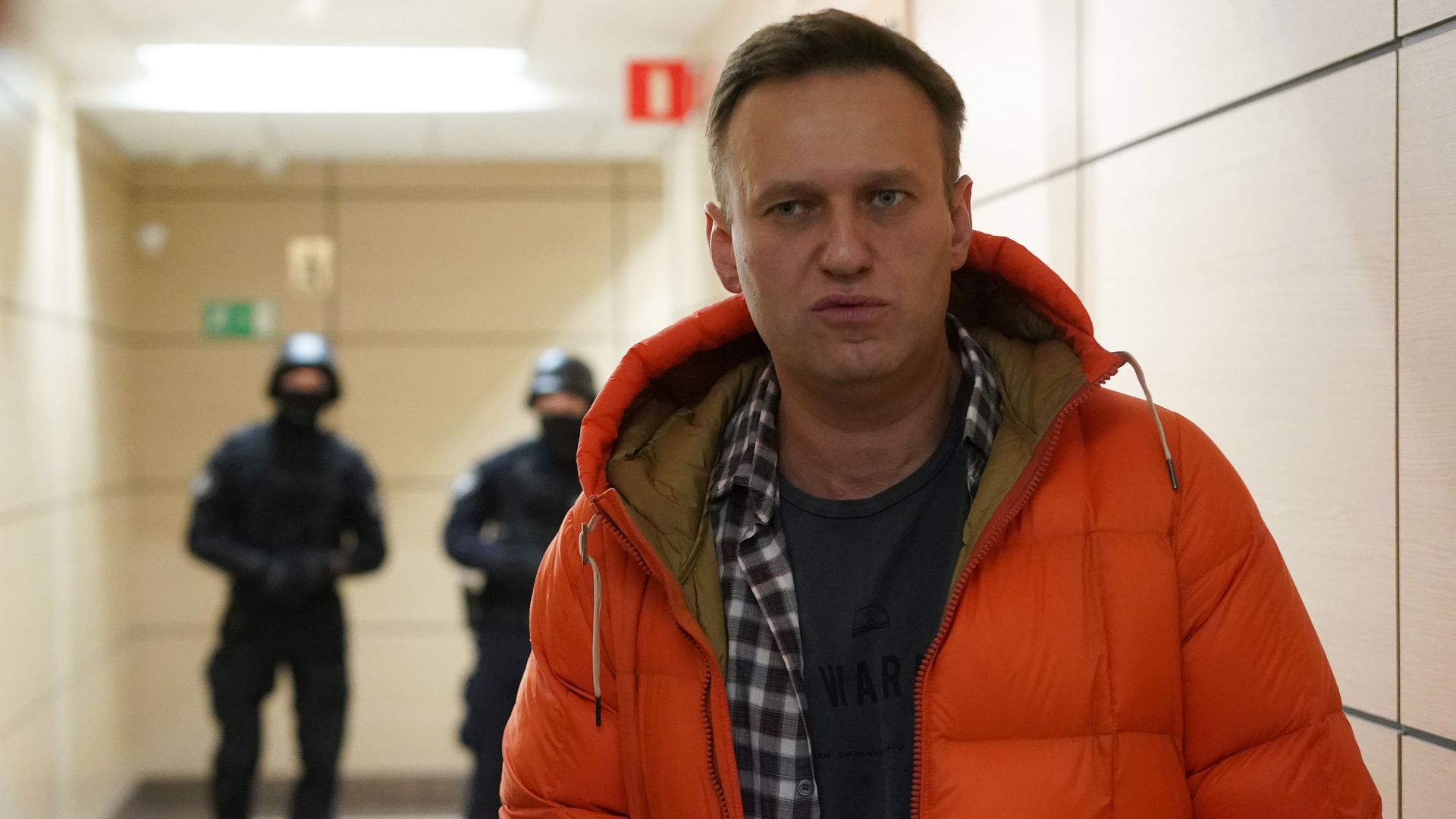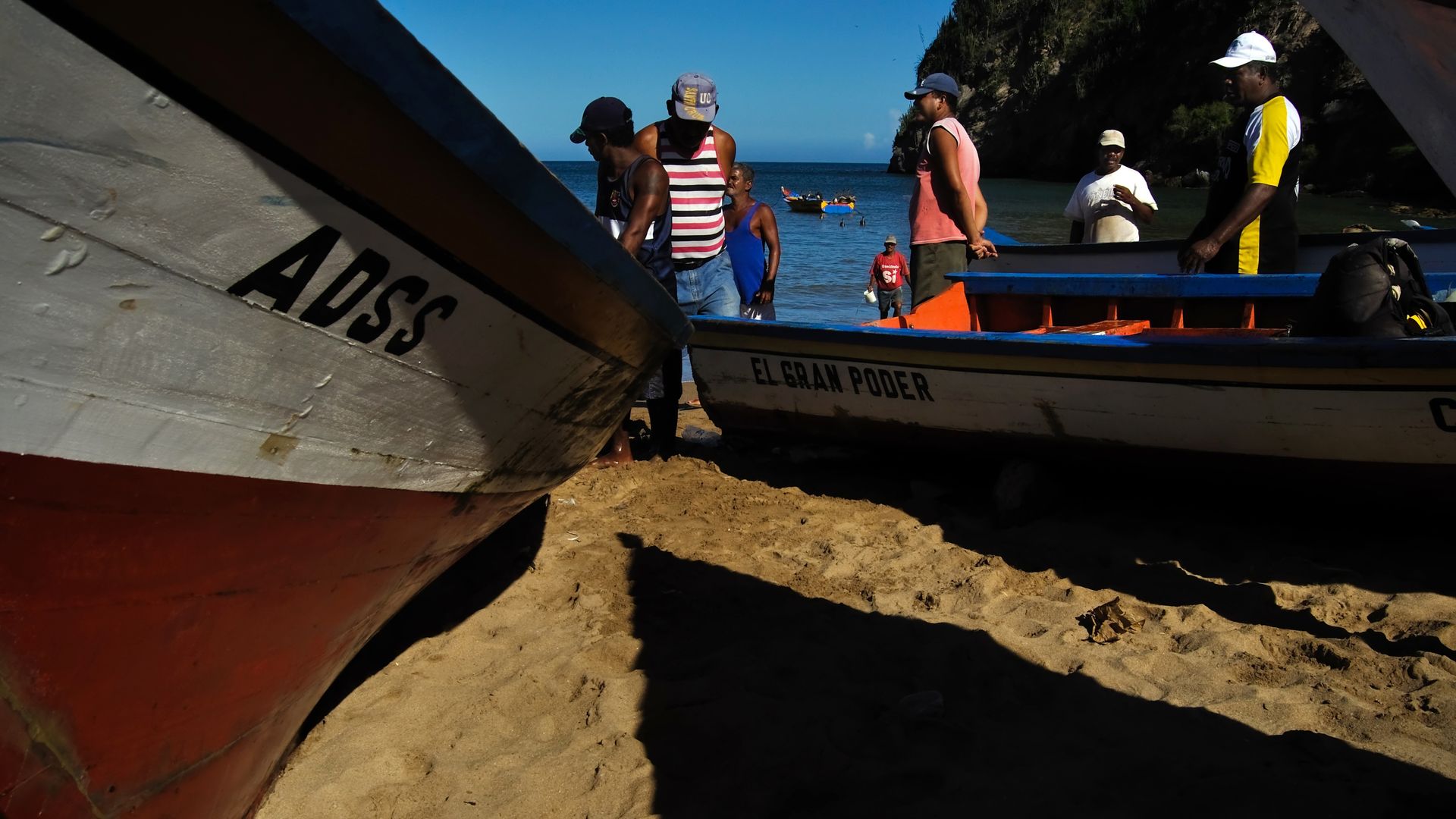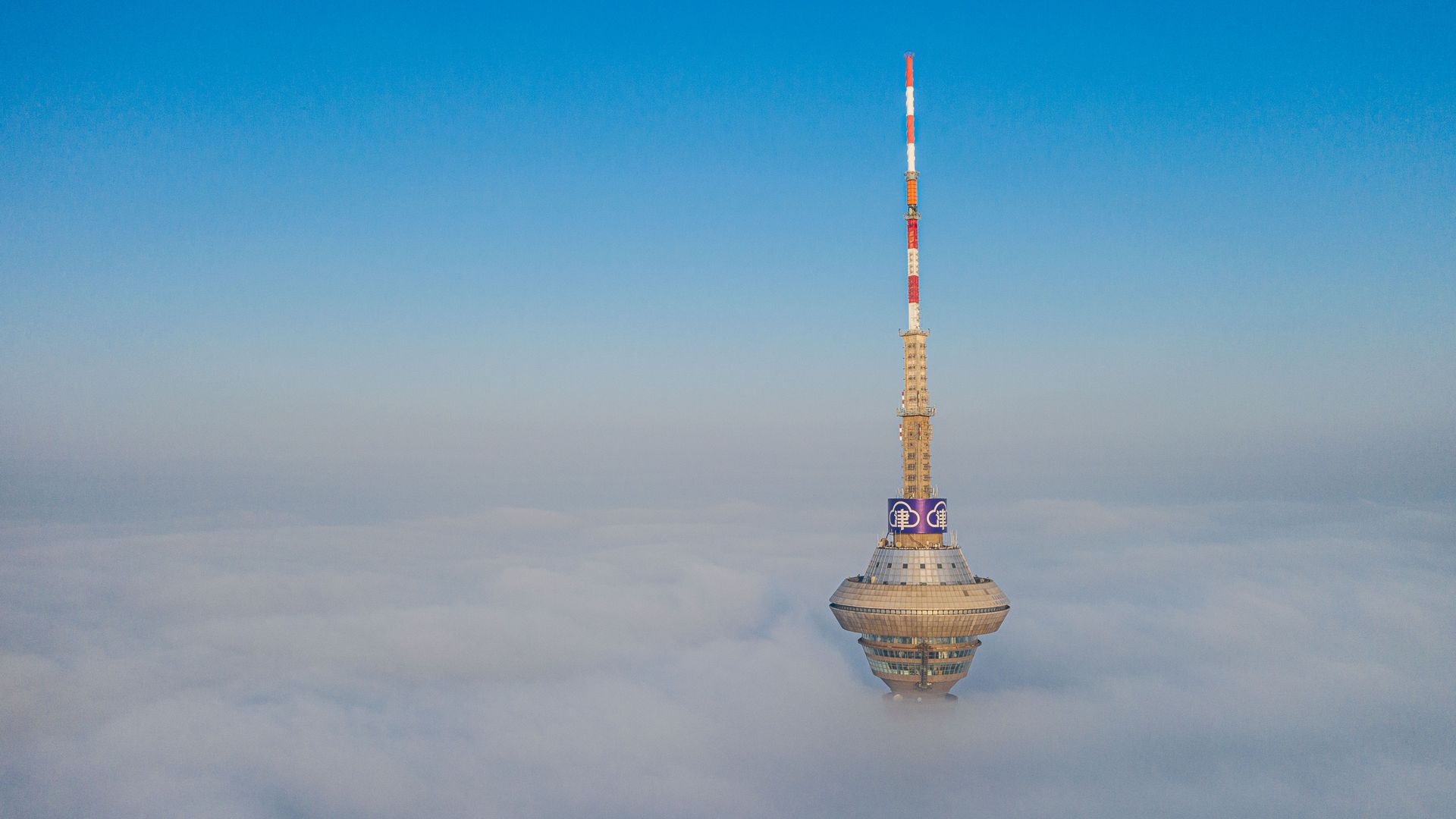| | | | | | | Presented By Raytheon Technologies | | | | Axios World | | By Dave Lawler ·Dec 14, 2020 | | Welcome back to Axios World. - We're starting with the pandemic tonight and then moving onto protests, spies and lost treasure (1,577 words, 6 minutes). Thanks for joining me.
New arrival? Sign up. | | | | | | 1 big thing: The year of the virus |  Data: European Centre for Disease Prevention and Control via Our World in Data; Chart: Axios Visuals. On New Year's Eve 2019, China notified the WHO of a cluster of cases of "pneumonia of an unknown cause." The big picture: The year since then has been defined all over the world by the struggle against a virus that has now claimed at least 1.6 million lives. But its toll has been unevenly distributed. By the numbers: - Residents of the European Union have died at 16x the rate of Africans and 30x the rate in Oceania, according to the official data (levels of testing and transparency vary).
- While 1 in every 1,000 Peruvians has died of the virus, just 1 in every 3 million Taiwanese has.
- Americans have died at 2.5x the rate of Canadians and 46x the rate in Japan.
Breaking it down: Western Europe has seen two massive waves — one peaking in April, the other in November. Countries including Belgium, Italy, Spain and France (12th on this list) were hit particularly hard by both waves. Central and Eastern Europe largely avoided the worst of the first wave, but now countries there are facing the most dire crises anywhere in the world. - Slovenia (pop. 2 million), for example, had recorded just 150 total deaths as of Oct. 1. Over the next 10 weeks, that number jumped to over 2,000.
- If the U.S. was experiencing Slovenia's current death rate, it would be recording 50,000 deaths per week.
In Latin American countries like Peru, Argentina, Mexico (13th) and Brazil (14th), death tolls began to climb more gradually in the spring, but have never really been brought under control since. - That's also the case in the U.S., which today crossed 300,000 deaths.
Breaking it down: The death rates in Mexico and France are virtually identical. But their trajectories — as seen through rolling 7-day averages of new deaths — tell very different stories. - France was averaging 975 deaths per day at one point during the spring peak, and as few as 8 per day during the summer lull.
- Mexico hasn't hit such a sharp peak, but has been consistently averaging over 300 deaths per day since May.
Zoom in: Belgium has been hit hardest of all. - Worth noting: Belgium's tally includes suspected COVID-19 deaths in facilities such as nursing homes, even without a positive test, which authorities have cited as one reason the country's death rate is so high.
- Other explanations include regional divisions, an overcomplicated bureaucracy and muddled public messages.
What to watch: Producing, distributing and administering vaccines globally will be the driving challenge of 2021, and likely beyond. Note: Our graphic excludes countries with populations under 1 million. |     | | | | | | 2. State of the outbreak |  Data: Our World in Data; Chart: Axios Visuals 1. Europe's downward trajectory in terms of new cases and deaths is in danger of a swift reversal, and governments are scrambling to add new restrictions before the holidays. - Bars and restaurants will close in London on Wednesday as the city moves into the highest tier of restrictions due to a surge in cases.
- Germany is tightening restrictions after a partial lockdown failed to contain the outbreak. Schools will be closed until Jan. 10, as will most stores (restaurants were already closed). Christmas gatherings will be limited to five people from two households.
- The Netherlands announced new restrictions on Monday, and Italy is expected to follow suit in the coming days, per the Guardian.
2. South Korea recorded more than 1,000 cases in a day for the first time on Sunday, with the prime minister warning that a nationwide lockdown was being considered. - South Korea's contact tracing system became a model for the world in the spring, but the outbreak is now more widespread and harder to contain.
- Japan is also recording record-high case counts, undermining the popular support of the new prime minister, Yoshihide Suga.
3. South Africa is in the midst of a second wave, with people under 30 — and in particular ages 15-19 — driving a surge in cases. Health authorities are blaming parties and other mass gatherings. - The prime minister of the neighboring kingdom of eSwatini died of coronavirus in a South African hospital over the weekend.
4. GlaxoSmithKline and Sanofi announced on Friday that their coronavirus vaccine program would be delayed until late 2021 in order to improve the immune response in older adults. - That's a reminder that not every vaccine will have a smooth rollout and sky-high efficacy.
|     | | | | | | 3. The COVID recovery: Debt and carbon |  Data: Institute of International Finance; Chart: Danielle Alberti/Axios 1. The extreme levels of debt corporations and governments around the world have built up — beginning before the pandemic but exacerbated by it — will complicate the global economic recovery, Axios' Dion Rabouin writes. What they're saying: "The wrong answer is to turn a blind eye to this," former Bank of India governor Raghuram Rajan said. - Yes, but: In addition to being an issue that governments have ignored over the past decade — and especially the past four years — it is virtually impossible to know the size of the problem because "it's been disguised a lot by the extensive support that's in place," Rajan added. Go deeper.
2. Newly published research shows that global CO2 emissions dropped an estimated 7% this year as the pandemic curtailed travel and economic activity, Axios' Ben Geman writes. - Yes, but: The rebound is already happening, though it's not clear how large it will be.
- "Much of the world is now experiencing a second wave of the COVID-19 pandemic, but daily emissions have not dropped nearly as much in the second wave as during the first wave," said Glen Peters of Norway's CICERO Center for International Climate Research.
 Reproduced from Global Carbon Budget 2020; Chart: Axios Visuals |     | | | | | | A message from Raytheon Technologies | | The future of aerospace and defense is here | | |  | | | | At Raytheon Technologies, nearly 200,000 engineers, scientists and researchers are pushing the limits of known science to explore deep space, advance aviation and build smarter defense systems that protect all of us here at home. That's the future of aerospace and defense. Learn more at RTX.com | | | | | | 4. Asia: Indian farmers escalate protests |  | | | Photo: Sakib Ali/Hindustan Times via Getty | | | | Leaders of a farmers' protest in India held a day-long hunger strike on Monday and reiterated their calls for nationwide protests over new laws to deregulate Indian agriculture, Axios' Shawna Chen writes. Why it matters: Farmers say the laws will drive down crop prices and benefit big corporations. They've taken the government by surprise with large demonstrations in New Delhi, which have now continued for 19 days. - Farmers are calling on the government to revoke the laws and restore price floors for crops like grain.
- Thousands have camped out on the outskirts of New Delhi and blocked off at least five major highways into the city, per AP.
The big picture: Agriculture constitutes 15% of India's economy and employs nearly 60% of its 1.4 billion people. - But many Indian farmers are struggling to make a living or escape their debts, particularly during the pandemic downturn. Suicides among farmers have spiked, the NY Times reports.
The three farm laws passed in September were intended to boost the sector and remove the need for middlemen, Prime Minister Narendra Modi has said. - They allow farmers to sell produce to private buyers, not just government-run markets where they're guaranteed a minimum price.
- But critics say the laws are flawed. "Our agriculture regulation needs change, but the new laws will end up serving corporate interests more than farmers," argued Kaushik Basu, the former World Bank chief economist and a top economic adviser to a previous Indian government.
- Talks between farmers and the government have failed. Farmers' unions soundly rejected an amended government proposal last week.
Where things stand: Farmers have protested for almost two months in Punjab and Haryana states, but things escalated three weeks ago when tens of thousands marched to New Delhi and clashed with police, per AP. |     | | | | | | 5. The path to Navalny's poisoning |  | | | Alexei Navalny. Photo: Dimitar Dilkoff/AFP via Getty Images | | | | An undercover team working for Russia's Federal Security Service (FSB) followed opposition leader Alexei Navalny on more than 30 trips to and from Moscow since 2017 before he was poisoned in August, according to a bombshell investigation. Why it matters: The Kremlin has denied having any role in the poisoning of Navalny, who is one of the most prominent domestic critics of President Vladimir Putin, Axios' Fadel Allassan writes. - But an analysis of "voluminous telecom and travel data" by Bellingcat — an open-source journalism website that also identified the Russian officers behind the poisoning of former double agent Sergei Skripal in the U.K. — suggests the poisoning with the nerve agent Novichok "was mandated at the highest echelons of the Kremlin."
The big picture: In addition to detailing specific movements and calls made by the officers allegedly involved in the poisoning, Bellingcat's investigation alleges that Russia is operating a clandestine chemical weapons program under the cover of an FSB investigative unit. Details: Bellingcat, which worked jointly with Russian news outlet The Insider and in cooperation with CNN and German newsmagazine Der Spiegel, found the attack was the culmination of years of stalking that began shortly after Navalny's 2017 announcement that he would challenge Putin for the presidency. - The investigation names two Russian doctors working with at least five FSB operatives who flew with Navalny at least 30 times over three years, and possibly attempted to poison him at least once before the August attack.
|     | | | | | | 6. What I'm reading: Gold on the beach |  | | | On Venezuela's Paria Peninsula, before the gold rush. Photo: Majority World/Universal Images Group via Getty Images. | | | | "The most extraordinary moment in the young fisherman's life began in the most mundane way: with a morning visit to the latrine." - "Walking back to his tin-roofed hut on Venezuela's Caribbean coast, the fisherman, Yolman Lares, saw something glisten along the shore. Raking his hand through the sand, he pulled up a gold medallion with an image of the Virgin Mary."
So starts a NY Times dispatch from the impoverished Venezuelan fishing village of Guaca, where hundreds of valuable pieces of jewelry inexplicably washed up on the beach. - Local residents scoured the beach for glints of gold and silver, and sold what they found to buy essentials. The NYT tried to figure out where on earth it all came from.
- "The mystery has merged with folklore, and explanations draw equally on legends of Caribbean pirates, on Christian traditions and on the widespread mistrust of Venezuela's authoritarian government."
Dive in. |     | | | | | | 7. Stories we're watching |  | | | A radio tower pokes through the clouds in Tianjin, China. Photo: VCG via Getty | | | - U.S. sanctions Turkey over Russian defense system
- U.K. and EU agree to extend Brexit trade talks
- Biden's Pentagon pick may need GOP rescue
- New climate pledges from EU and China
- Expert voices: China's make-or-break decade
- Trump's tensions with GOP senator made Morocco deal possible
- O'Brien takes wife on COVID-era tour of Europe
Quoted: "A desk is a dangerous place from which to view the world." — John le Carré (1931-2020) |     | | | | | | A message from Raytheon Technologies | | The future of aerospace and defense is here | | |  | | | | At Raytheon Technologies, nearly 200,000 engineers, scientists and researchers are pushing the limits of known science to explore deep space, advance aviation and build smarter defense systems that protect all of us here at home. That's the future of aerospace and defense. Learn more at RTX.com | | | | | | Axios thanks our partners for supporting our newsletters.
Sponsorship has no influence on editorial content. Axios, 3100 Clarendon Blvd, Suite 1300, Arlington VA 22201 | | | You received this email because you signed up for newsletters from Axios.
Change your preferences or unsubscribe here. | | | Was this email forwarded to you?
Sign up now to get Axios in your inbox. | | | | Follow Axios on social media:    | | | | | |












No comments:
Post a Comment